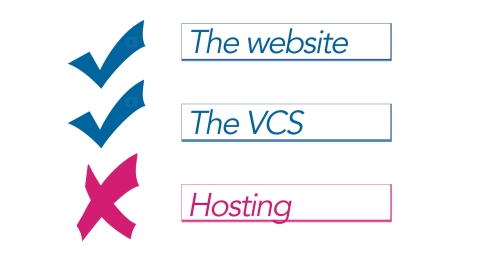Managing a complex website stable successfully
A website is a constantly evolving product, and is a business’s first point of public contact. It is vital to keep a website up to date and, like a motor vehicle, do regular maintenance in order to keep it running smoothly.
At Annertech, maintaining websites falls to our ‘Managed Services’ team. It is, in fact, the biggest team in Annertech. In this article we take a look at the Managed Services unit – how it's structured; how it works – and how clients play an important role in the smooth running of their websites.
The 17-strong team looks after the websites and needs of 71 clients. Not only do they keep things running smoothly and sort out issues as soon as they materialise, but the Managed Services team members also develop and add new features to sites as they're needed.
They also stay on top of new developments and technology to ensure that clients run the latest and greatest versions of all their sites' software.
So how does a team as big as this, that manages so many sites, keep things running smoothly? This is where terms like agile, iterative development and minimum viable product come into play. Don’t let the jargon put you off – there’s a reason these terms and concepts were coined.
Hopefully this blog will demystify some of the words used in the world of development and give you a glimpse into the inner workings of Annertech's largest team.
The team
Managed Services Director Anthony Lindsay heads up this team of account managers, delivery managers and developers.
The engineers/developers create the new tools and features, and undertake regular security updates, accessibility work and cookie consent management.
Delivery managers oversee the day-to-day tickets and weekly progress reports, and the account managers cover the bigger picture and roadmaps side of things.
Clients who work with us may have heard terms like “iterative development” and “minimum viable product” in conversation with the team.
What does this have to do with a support contract and website? In its simplest terms, it gives clients ultimate flexibility, with small and frequent changes with defined parameters.
What that means for clients is rapid, quality changes deployed to their websites frequently.
Being Agile
By definition, agility is being able to rapidly change while remaining stable. This does not really change wildly when applying the term to website development.
Agile development is working in an iterative manner to deliver the end goal with fewer risks at a faster pace. Instead of putting all the eggs in one basket, and pinning everything on one large risky deployment, we work in small, bite-sized chunks towards the same common goal.
Minimum viable product
Here is where the term "minimum viable product" comes into play. In short this is deciding what is absolutely essential to your feature/functionality, a kind of bare minimum if you will.
This ensures the developers focus on the clients‘ key requirements, and avoid the risk of getting bogged down on anything non-essential.
They’re working on delivering a first/beta version of the requirement, that is just enough to be usable by the intended end user. The feedback from these users then provides a base to improve and iterate on the functionality, to make it the shiny end product of the client's dreams.
Rome wasn't built in a day, after all!
Iterative development
When working within iterative development, the team is looking to make a fast impact and deliver value to clients (and their end users) in key areas, with clients’ guidance and collaboration. From the first time a team member touches an item on the to-do list, the goal is to move the task from the “Backlog” list to the “Done” list in the most efficient way.
This is often aided by breaking large cards up into smaller individual tasks that can be deployed independently of one another, so that the quality stays consistent and steady benefits are delivered to a site.
The cards
In order to facilitate this, Annertech’s Managed Services team uses a card system as part of the workflow for the to-do lists.
If a client discovers a problem or an issue with the site, they create a card. This card can be seen by everyone working on the projects, and it will move through the workflow, from the backlog list to the done list.
A team of developers is on standby to look at any new cards to begin assessing the workability of a card. They’ll read through the details that are given, and ask any questions they might have to clarify the requirements if needed.
Clients can help the team to help them in so many ways! When creating cards, there is almost no such thing as too much information; the more information the team has the better and faster they can help.

Here are some tips to bear in mind when raising issues with developers:
- When creating card it is helpful to add links to examples of the feature you'd like or the problem you’re seeing. Even better: upload screenshots or videos of messages and issues, files that may be relevant to the task (PNG images, brief documents) or any information you feel would aid the task.
- Try to clearly state what success looks like for the task, whether that is reporting how a broken piece of functionality should work or requesting an amendment to any of the site furniture.
- As part of the workflow, the development site will always be handed over to the client to do a final test on a development site before deploying to the live site. This is where breaking things down will benefit, as it makes for quicker and easier testing and deployment to live.
- Perfection does not have to be achieved in one step, and it is important to bear the bigger picture in mind when testing. Functionality over form is the goal for the first 85% of the work, with this often being delivered more quickly than the “perfect” product. Small things can always be ironed out quickly at a later date.
Conclusion
The Managed Services team works in time and materials, and develop/deliver as much as they can until the time runs out.
The more granular an issue can be made, the quicker the requirement can be delivered, and the more value can be provided. Clients help us to help them, and this ensures it's a win-win all round!
Need an exceptional website management team?
Our talented support engineers are standing by to debug, develop, deploy and deliver valuable updates to your website.

Heather Smith Delivery Manager
Heather is one of the delivery managers on the Managed Services team, and keeps the day-to-day requests running smoothly for all clients. She has been working with Drupal (and Drupal users) for more than 10 years, and strives to ensure our clients feel the value from the Managed Services contract.

